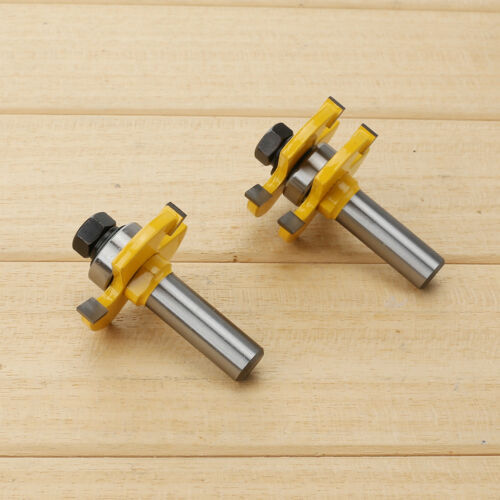Don't wanna be here? Send us removal request.
Text
Using Router Without Table To Cut Tongue And Groove
It might help to point out that most routers have some means of measuring changes in height. @Paulster2 The boards will be true to themselves is not always correct. Yes if the board is perfectly flat to begin with yes. But there are plenty of reasons for a board to not be.
The sharper the product is, the more quickly and efficiently it can infiltrate a wide variety of different materials.
Make sure the bottom of the teeth goes parallel to the throat plate.
However, there are often cases when the pieces need work or adjustments, but that cannot be done after gluing.
A router is arguably the most versatile portable power tool you can buy.
Will it be used for a rail & stile application, paneling or flooring?
Also, if you look at the picture the groove portion is reversed so where it was assembled the two pieces no longer would compliment each-other. I don't own a router so that is just speculation for me. Don't these bits come in sets which means they should be aligned already by having shafts of the same length? I would have guessed that sticking them equally far into the router should ensure a perfect joint. This set should only be used in a router table with the fence in line with the bearing. One factor to consider when purchasing router bits is shank size. As we discussed above, the use of tongue and groove router bits is relatively easy. However, there are a few precautions that you have to take care of. The use of tongue and groove joints is common in the majority of home improvement projects in today’s date. To cut and shape the pieces of wood properly, tongue and groove router bits are used. Make the router table fence even with the ball bearing in the bit by bridging the opening in the fence with a straight edge. Adjust the fence position until the straight edge is touching both sides of the fence and the ball bearing. Unplug the router any time you’re making adjustments to the router or router table. CMT Fatigue Proof® Steel CMT router and boring bits start from solid bar stock steel. A hot drawing process pulls all the fibers of the steel in one direction resulting in extra strong and resilient bars. The first blade cuts down horizontally through your board, which leaves grooves behind it. The groove can be any width you want them to be; usually, they’re about half an inch thick so there’s plenty of room for the tongue to fit in. Keep the pressure steady by bumping out the featherboard with screws and plywood spacers to clear the taller cutter. Use a pushstick as before for a smooth tongue with a consistent thickness and width. The tongue groove joinery is designed for butt joints, not designed for 45 deg miter joints. Works great with all kinds of materials and surfaces, like woods, MDF, particle boards, plywood, panels, softwood, hardwood and many others. • The tool consists of an arbor with an integral shank, two identical, removable slotting cutters, and a pair of bearings. ◆ Size--The 1/2" shanks Tongue and Groove V-Notch Router Bit. Premium C3 micro-grain tungsten carbide blades for a sharper & longer lasting using. Router bit cutter material is YG6 Solid Hardened Steel. https://billious.edublogs.org/2022/02/15/types-of-tongue-and-groove-router-bits/
Can You Glue Tongue And Groove To The Wall?
Animal glue is soluble in water, producing joints that can be disassembled using steam to soften the glue. Finally you can re-clamp your motor in the base, plug the router back in, and flip on the power switch. As mentioned earlier, the switch on my router table controls both the router motor and the shop vac.
What Is A Good Depth For Tongue And Groove?
Timber expands and contracts in response to humidity, usually much less so longitudinally than in the radial and tangential directions. As tracheophytes, trees have lignified tissues which transport resources such as water, minerals and photosynthetic products up and down the plant. While lumber from a harvested tree is no longer alive, these tissues still absorb and expel water causing swelling and shrinkage of the wood in kind with change in humidity. When the dimensional stability of the wood is paramount, quarter-sawn or rift-sawn lumber is preferred because its grain pattern is consistent and thus reacts less to humidity. A wedge-shaped tongue and groove router bit is often preferred because they offer a strong clinch and can latch on wood as well as onto each other. Tongue & groove router bits seem like they should be pretty straightforward, but there are a multitude of variables to consider. Is it a squared joint or would you like a V in the groove? Will it be used for a rail & stile application, paneling or flooring? If you have trouble finding spline for hardwood flooring you can make your own using quarter inch Masonite, since it takes a full quarter inch to fill the groove from the router bit. Use a block plane to ease the edges of your 5/8th inch wide home made spline so everything slides into place easily. I rip the Masonite on a table saw, planing one edge before each rip since they are small rips and hard to hold. Industrial quality router bits with Anti-Kickback design and CNC balanced with high quality guide bearings.

1 note
·
View note